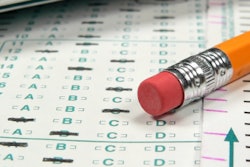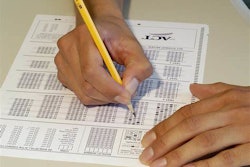JACKSON, Miss. — Enrollment for the fall semester rose strongly at Mississippi’s eight public universities, but fell for the sixth straight year at the state’s 15 community colleges.
Preliminary counts released Friday show students rose 2.5 percent at universities and fell 0.9 percent at community colleges.
Community college enrollment has falling since the end of the recession, as a better job market means fewer people are brushing up on job skills. Universities grew the most since 2011.
Among universities, enrollment hit a new record, growing fastest since 2011. The four smaller regional universities grew by the largest shares, with Mississippi University for Women adding 11 percent more students.
“Students continue to seek our unique educational experience, which provides small class sizes and personalized instruction,” said MUW President Jim Borsig.
Universities have focused on recruiting students as a strategy to improve finances, especially among the smaller schools. Higher Education Commissioner Glenn Boyce said that’s still an important strategy to gain additional revenue by filling empty seats. He also said it appears that programs offering lower in-state tuition rates to nonresident students were boosting enrollment.
“It’s encouraging and exciting to see that the regional institutions have held their own,” said Higher Education Commissioner Glenn Boyce.
Mississippi Valley State University grew 8 percent, adding students the third straight year after declines had raised concerns about the viability of the school. Valley President Bill Bynum said the university is trying to focus on retaining students, offering more academic programs and improving career opportunities.
Mississippi State University grew the most among the state’s four larger universities. MSU, MUW, the University of Mississippi and Jackson State University hit all-time enrollment records.
While all eight public universities grew, enrollment was basically flat at JSU and the University of Southern Mississippi. Assistant Vice President and Dean of Admissions Kate Howard said USM remains focused on increasing the academic quality of students and retaining more students.
Community college enrollment began dropping after hitting an all-time high of almost 89,000 in 2010. This fall’s enrollment of 73,000 students is 14 percent lower. Community College Board Executive Director Andrea Mayfield noted this year’s decrease was smaller “It’s a good sign that we’re starting to see the decline slow down,” Mayfield said. She also said some colleges saw an increase in the number of classes students were taking even though their head counts fell.
Meridian Community College grew by the largest share among two-year schools. Also posting increases were Hinds Community College, Northwest Community College, Pearl River Community College
Enrollment shrank the most at East Central Community College.
“Enrollment is extremely important because community colleges rely on tuition and fees to run their operations,” Mayfield said, saying colleges are working to welcome more students.
Here are preliminary totals for each community college and the percentage change from last fall:
Coahoma: 2,191, -0.8 percent
Copiah-Lincoln: 3,075, -2.2 percent
East Central: 2,379, -8.6 percent
East Miss.: 4,261, -6 percent
Hinds: 11,505, +1.3 percent
Holmes: 6,176, -0.9 percent
Itawamba: 5,833, -1.2 percent
Jones: 4,749, -0.3 percent
Meridian: 3,606, +6.4 percent
Miss. Delta: 2,372, -4 percent
Miss. Gulf Coast: 9,294, -3.7 percent
Northeast Miss.: 3,524, -1.2 percent
Northwest Miss.: 7,894, +1.2 percent
Pearl River: 4,725, +1.5 percent
Southwest Miss.: 1,897, -0.2 percent
Total all comm. colleges: 73,481, -0.9 percent









